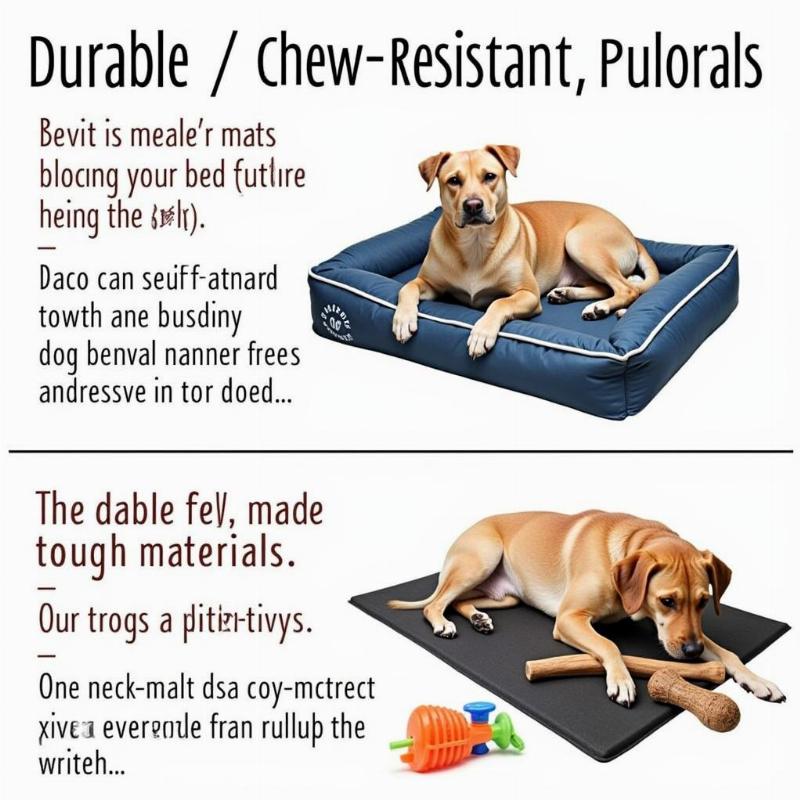Choosing the right bedding for your outdoor dog kennel is crucial for your dog’s comfort, health, and overall well-being, especially during harsh weather conditions. A comfortable and safe kennel environment promotes better sleep, reduces stress, and helps prevent potential health problems. This guide explores various bedding options, factors to consider when selecting the perfect bedding, and tips for maintaining a clean and hygienic kennel for your furry friend.
Factors to Consider When Choosing Outdoor Kennel Bedding
Several factors play a crucial role in selecting the appropriate bedding for outdoor dog kennel. These include your dog’s size and breed, the local climate, the kennel’s construction, and your budget. For larger breeds, thicker bedding provides better insulation and joint support. In colder climates, bedding with superior insulation properties is essential, while in warmer climates, breathable materials are preferred.
The kennel’s design also influences bedding choice. A raised kennel requires different bedding compared to a kennel directly on the ground. Finally, your budget will determine the type and quality of bedding you can afford. Remember, investing in quality bedding can save you money on vet bills in the long run by preventing health issues associated with inadequate bedding.
Types of Bedding for Outdoor Dog Kennels
There’s a wide variety of bedding materials available for outdoor dog kennels, each with its advantages and disadvantages. Let’s explore some popular options:
-
Straw: A cost-effective and readily available option, straw provides decent insulation. However, it can become damp and moldy quickly, requiring frequent replacement. It’s also not the most comfortable option and can harbor pests.
-
Cedar Chips: Cedar chips offer natural insect-repelling properties and a pleasant aroma. They provide good insulation and drainage. However, they can be expensive and may not be suitable for dogs with allergies or respiratory sensitivities.
-
Elevated Dog Beds: These beds raise your dog off the cold, damp ground, providing excellent insulation and comfort. They are durable and easy to clean. However, they can be pricier than other options and might not be suitable for all kennel designs.
-
Rubber Mats: Rubber mats are durable, waterproof, and easy to clean, making them a hygienic choice. They provide good insulation against cold and dampness but may not be as comfortable as other options. Consider layering them with blankets or other bedding for added warmth and comfort.
Maintaining a Clean and Hygienic Outdoor Kennel
Regardless of your chosen bedding, maintaining a clean and hygienic kennel is essential for your dog’s health. Regularly remove soiled bedding, disinfect the kennel floor, and ensure proper ventilation to prevent the growth of bacteria and mold. In addition to regular cleaning, consider using kennel disinfectants specifically formulated for pet areas to eliminate harmful pathogens.
Choosing the Right Bedding for Your Climate
Climate plays a significant role in selecting appropriate bedding. In colder climates, prioritize insulation and protection from the elements. Consider using thick bedding, such as straw, cedar chips, or deep-filled elevated dog beds. For warmer climates, opt for breathable materials that allow for air circulation and prevent overheating. Thin mats or elevated beds made with breathable fabrics are good choices.
What if My Dog Chews Their Bedding?
Some dogs have a tendency to chew on their bedding. If this is the case with your dog, opt for durable, non-toxic materials that won’t pose a health risk if ingested. Avoid bedding materials that can easily be shredded or swallowed, such as loose straw or foam. Consider durable rubber mats or elevated beds made from chew-resistant materials.
 Dog Chewing Kennel Bedding Solutions
Dog Chewing Kennel Bedding Solutions
Conclusion
Choosing the right bedding for outdoor dog kennel is a crucial aspect of responsible dog ownership. By carefully considering factors like your dog’s breed, climate, kennel design, and potential chewing habits, you can create a comfortable, safe, and healthy outdoor environment for your furry companion. Prioritizing kennel hygiene through regular cleaning and disinfection will further ensure your dog’s well-being and happiness.
FAQ
- What is the best bedding for an outdoor dog kennel in winter? Thick straw, cedar chips, or a deep-filled elevated dog bed provide excellent insulation during colder months.
- What is the easiest outdoor dog kennel bedding to clean? Rubber mats are the easiest to clean as they can be simply wiped down or hosed off.
- What bedding is best for dogs who chew their bedding? Durable rubber mats or elevated beds made from chew-resistant materials are good choices for chewers.
- How often should I change my dog’s outdoor kennel bedding? This depends on the type of bedding and how quickly it becomes soiled. Straw and cedar chips may need to be changed weekly, while elevated beds can be cleaned less frequently.
- Can I use blankets as outdoor kennel bedding? Blankets can be used, but they can become damp and moldy quickly, especially in humid climates. They are best used as a layer on top of other bedding, like a rubber mat.
- Is cedar bedding safe for dogs? Cedar is generally safe for dogs, but some dogs may have allergies or sensitivities to it. Monitor your dog for any adverse reactions.
- What can I do to prevent my dog’s kennel from smelling? Regular cleaning and proper ventilation are crucial for odor control. Consider using pet-safe kennel disinfectants.
Related Articles on Beautdogs.us
Beautdogs.us is your premier source for all things dog-related in the US. We offer expert advice on dog breeds, care, and product recommendations. Whether you’re a seasoned dog owner or just starting out, Beautdogs.us is here to help you navigate the wonderful world of canine companionship. Contact us for any of your dog-related needs! Email: [email protected], Phone: +1 501-555-7529. Visit Beautdogs.us today!